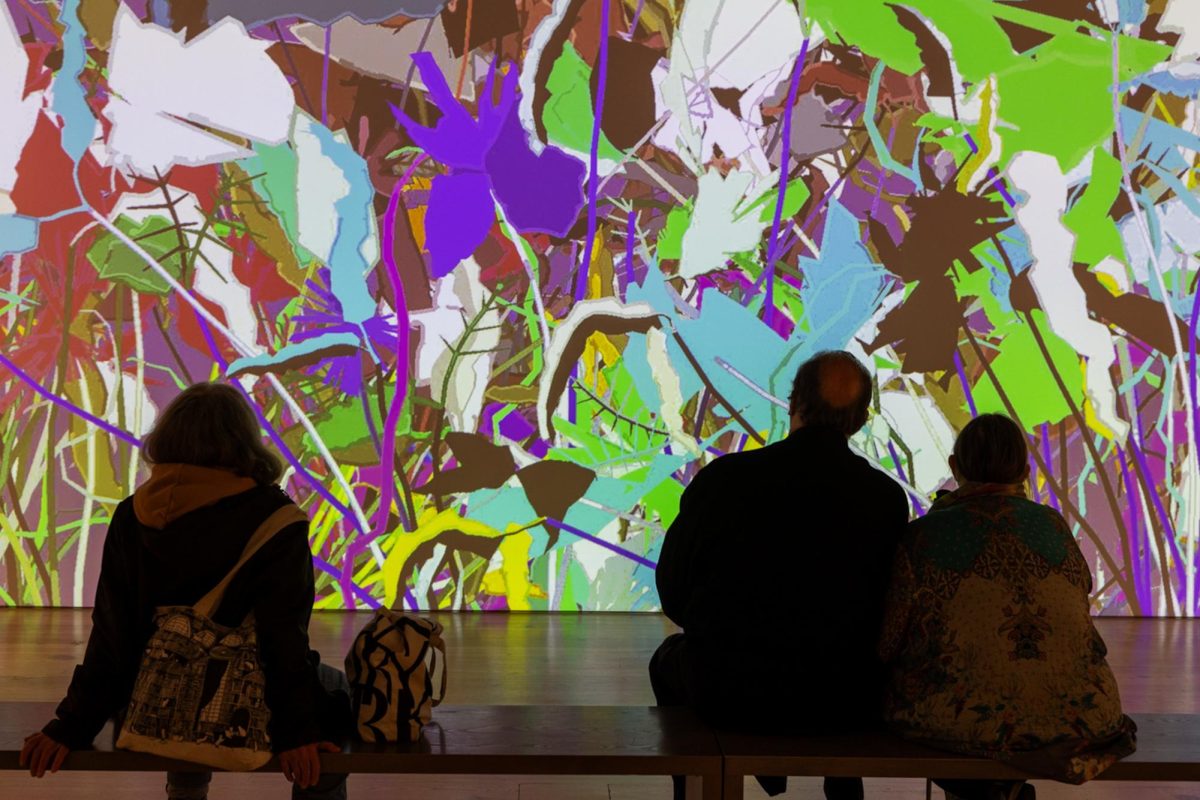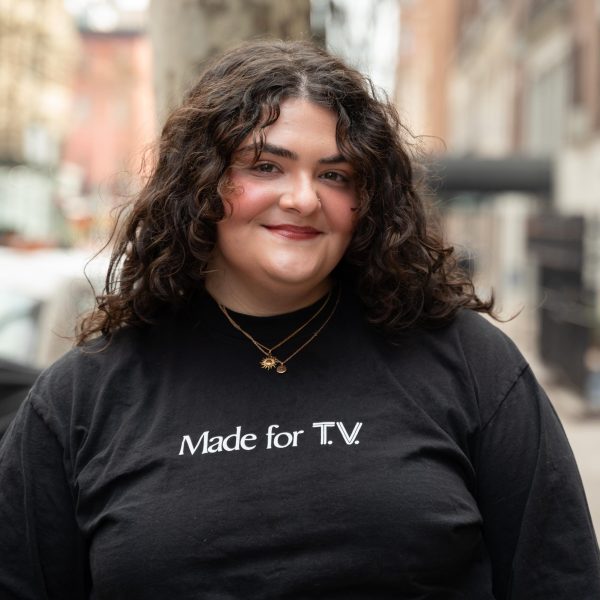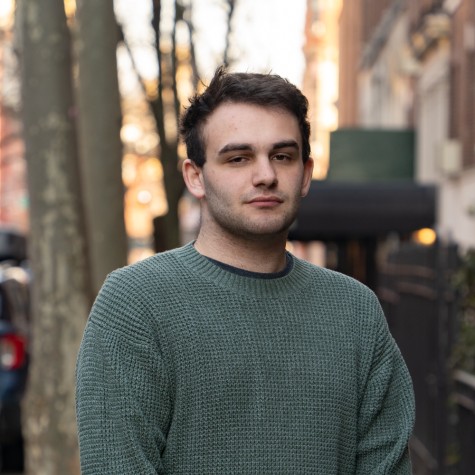Before online AI art generators like DALL·E or Midjourney, there was AARON, a software developed by British painter-engineer Harold Cohen. The “Harold Cohen: AARON” art exhibition at the Whitney Museum of American Art celebrates AARON’s legacy and Cohen’s masterful artistry.
Cohen began his career as an abstract painter in London before moving to the University of California, San Diego in 1968, where he became director of the Center for Research in Computing and the Arts. While in San Diego, Cohen developed AARON to be a continuation of his own knowledge and creativity — AARON is a collaboration between artist and machine.
The exhibition chronicles Cohen’s development of AARON’s software, emphasizing the creativity of the programming process. The artworks are split into three rooms: “AARON’s Beginnings,” “The Figurative Phase” and “Flora and Figures,” and include marker drawings, paintings and projections.
Cohen first programmed AARON to understand basic compositional rules, such as size, shape and position. The artworks within “AARON’s Beginnings” are reminiscent of a child’s first interaction with art, where various lines and shapes gradually form a cohesive image after practice.
“Untitled [Amsterdam Suite]” demonstrates AARON’s experimentation with lines and shape formation, including rudimentary hatching techniques, scattered zigzagging lines and eclectic shapes across the page. Cohen programmed AARON to consider the “‘success’ of a composition” using a robot marker-plotter — also known as a “turtle” — to compose each image line by line as if it were drawing freehand.
Cohen would then fill in AARON’s monochromatic line art with vibrant, contrasting colors, especially bright blues and pinks. These details add a layer of humanity to the piece that AARON cannot provide on its own.
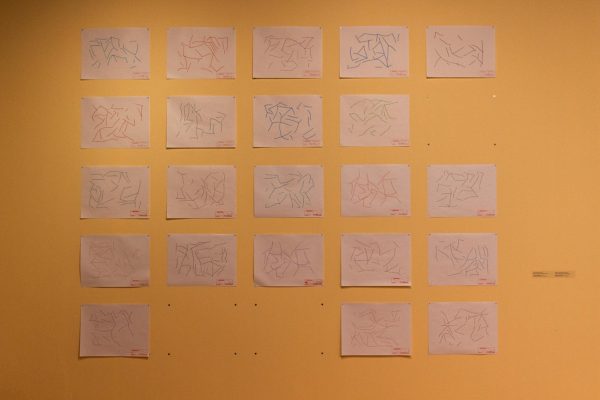
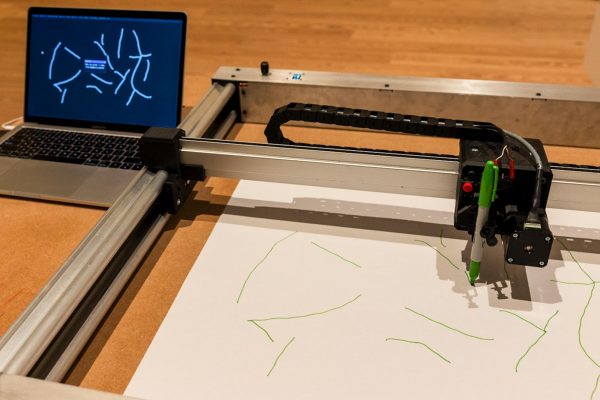
The room also features “Mazes,” two recreations of Cohen’s early “turtles.” The machines use modern Python code to plot abstract lines or figurework across the entirety of the page with just a moving robot arm and a black Sharpie, whose results resemble AARON’s early drawings.
“The Figurative Phase” demonstrates a departure from AARON’s basic compositional skills and into more seemingly multi-dimensional figure artwork. Cohen’s notebooks, on display in the exhibition, delineate the process AARON undergoes in order to decide how to pose a figure as well as display sketches of anatomy references.
“Stephanie & Friend” is a figure drawing of two women in front of an abstract, colorful background, reflecting AARON’s progression into a more complex composition process. AARON shows an understanding of perspective by having one figure in the background of the work. Cohen then filled the piece in with color, making the artworks in this section the most representative of the symbiotic relationship between Cohen and his program.
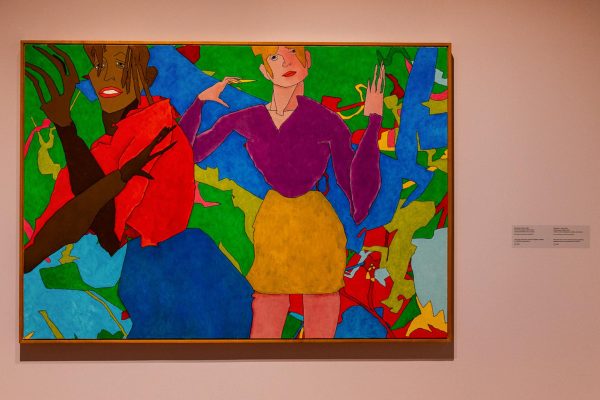
The “Flora and Figures” section is a midheaven between AARON’s fully-formed figure pieces and simple line drawings. These works demanded a general understanding of the structure of nature. Cohen input information about size and pattern to introduce AARON to drawing flora.
“AARON Gijon” is arguably the program’s most complex work on display. The work shows the machine’s spatial and compositional understandings through the layering of plants in space, and demonstrates a consideration of color theory with AARON blocking in a variety of both dull and neon plants to distinguish between the forms it draws.
At a time where our reliance on generative artificial intelligence is increasing, it’s more important now than ever to recognize the value of artist input and creativity in autonomous art. AARON’s success as an AI art program stems from the fact that it relies entirely on the input from Cohen and art theory in order to draw. Despite being machine made, there is still a presence of humanity in AARON’s works, born from Cohen’s collaborative relationship with the machine.
“Harold Cohen: AARON” is on display at the Whitney Museum of American Art until May 19. NYU students with ID receive free admission.
Contact Dani Biondi at [email protected].























































































































































